“When is it better to use braces instead of belts?” This question echoes in the minds of all those who question the rules to be observed in order to show off an impeccable style, not only according to the fashion trends of the moment for men’s fashion, but above all based on the canons of classical elegance.
The doubts in this regard are more and more frequent due to the recent revival of the suspenders: for years relegated inside the closet or the innermost drawers of the house, today they are dusted off in various contexts, from the social event to the informal evening – for adding up an distinctive touch.
We will try to resolve any doubts, bearing in mind that the choice of wearing suspenders – besides, of course, having the primary purpose of holding up the trousers – can and must respond not only to the rules of “good dress” , but also of personal taste.
Menu
Braces and belt together?
Before starting to find out more, let’s clarify a point immediately: suspenders and belt should never be worn together. We can summarize the concept by quoting Frank, the antagonist interpreted by Henry Fonda in Sergio Leone’s masterpiece, Once Upon a Time in the West:
“How can you trust a man who wears both a belt and suspenders? The man can’t even trust his own pants.”
As said, the two things can never go together.
History of suspenders
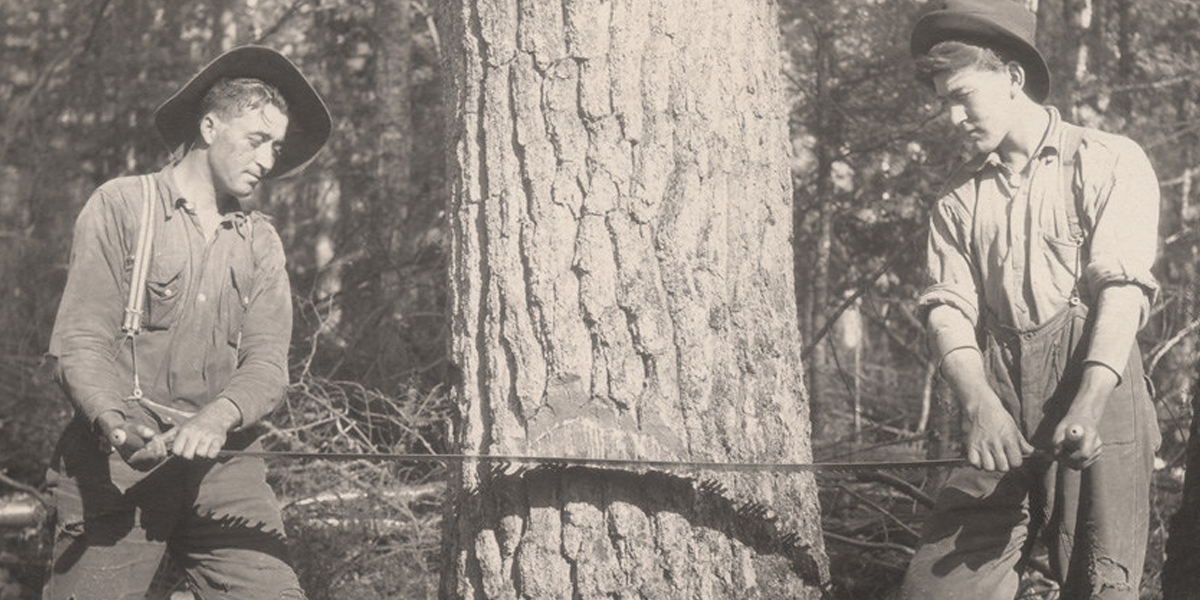
The first sightings of something that can look similar to the concept we have today of braces seem to date back to 18th century France, shortly before the French Revolution, when some kind of strips of tape were attached to the buttonholes. The modern version of suspenders was instead made popular starting in 1822 by the London merchant Albert Thurston, who started selling them at his store, at 27 Panton Street, at the London Haymarket.
Later Samuel Clemens asked for and obtained a patent for Adjustable and removable garment straps in 1871. Initially, the suspenders were worn almost universally by everyone: this custom was given mainly by the high cut of the pants in vogue between the mid-nineteenth and the beginning of the twentieth century, which made it impossible to use the belt.
However, they quickly lost popularity during the First World War, when men became accustomed to using the belt, introduced forcefully with war uniforms.
The decline in popularity of suspenders was also due to what was the common perception: for years they were in fact considered an “intimate” accessory, so much that in 1938 a city on Long Island tried to ban to the gentlemen to wear them without adequate coverage, calling it * a sartorial indecency *.
Due to a sharp change in the style of the trousers (proposed with a lower waist) and the greater practicality offered by the belt, the suspenders have known years of steady decline in popularity, except to gain a new popularity in the last few decades, especially as a stylish accessory and, why not, fashionable if appropriate to the context.
Types of braces
According to the current and contemporary definition, braces are straps of fabric and / or leather worn on the shoulders, used essentially to hold up the trousers.
There are two main types of suspenders: the most modern suspenders with clips, which are attached to the trousers through a special tab, and the suspenders with buttonholes (or eyelets, also called moustaches), which attach directly to buttons sewn onto the trousers.
There are also particularly flexible dual-use models, for which it’s possible to interchange the type of coupling, with clips or with slots.
The straps can be elasticized, entirely or only at the edge of the attachments, while the most common conformations are called X or Y, based on the shape of the rear crossing.
Clip braces
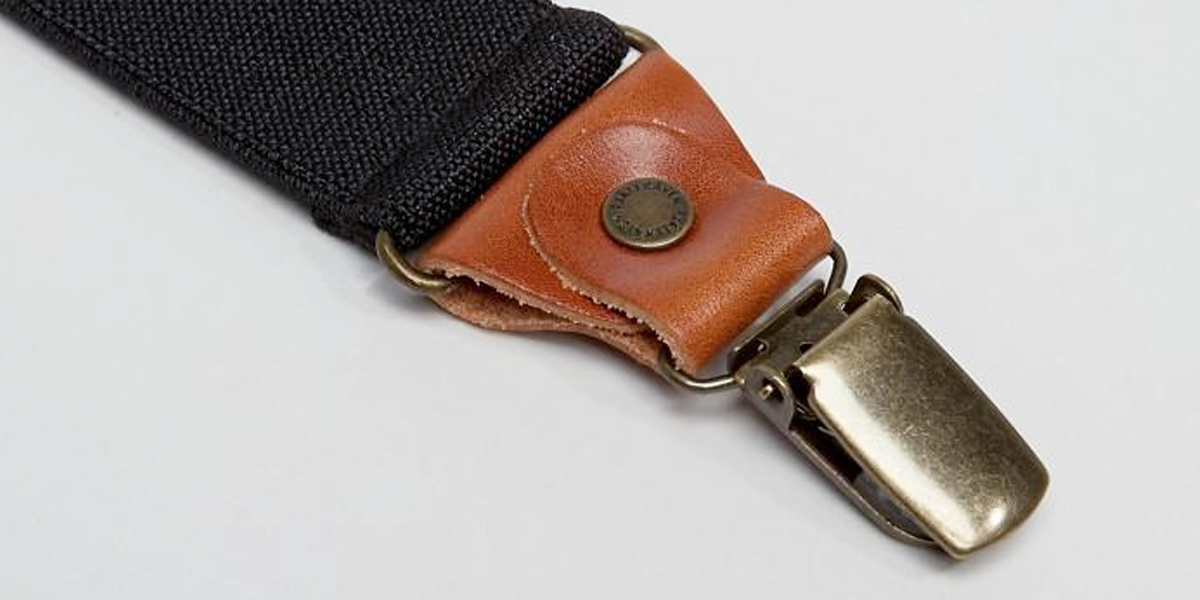
The suspenders with clips are the most practical and versatile solution, but also the most casual and less suitable for formal occasions. They are applied by hooking them to the waist of the trousers and are firmly attached to it, wherever you want.
Given the functioning of this type of braces, the clips are necessarily more exposed and visible if not correctly covered, a feature that makes this solution less suitable for more formal contexts, where discretion is essential.
Furthermore, the pressure exerted by the clips on the waistline could ruin the fabric of the trousers over time; for this reason it would be better to use this kind of braces with clips with less delicate fabrics.
The obvious advantage of the clips is their versatility: they can be used with any type of trousers, although the advice is always to use them with trousers without belt loops, so as not to run into the effect of visual inconsistency between accessory and garment.
Braces with buttonholes
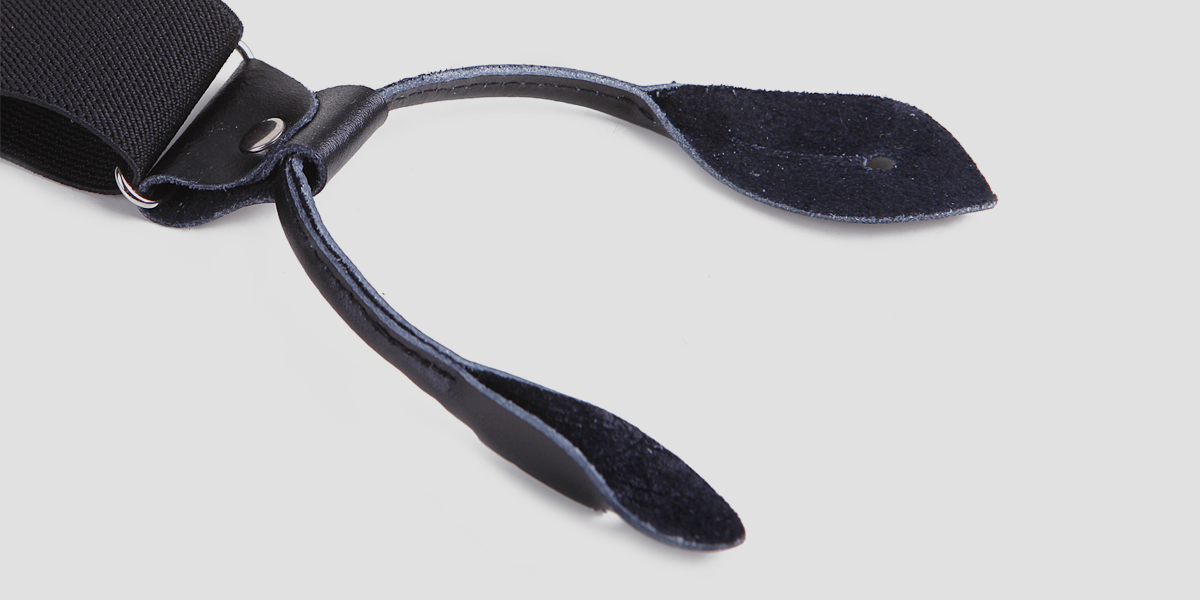
The suspenders with buttonholes are undoubtedly the most elegant and classic version of this accessory. Indispensable in the presence of a custom-made suit, they are connected directly to the buttons sewn on the waistline of the trousers using the extension on the belt (the aforementioned moustaches), equipped with the appropriate eyelets.
Historically, the buttons were always outside and were hidden by the vest. With the gradual disappearance of the vest (recently back in vogue) the tailors began to hide the buttons on the inside of the trousers.
Today most of the trousers that use suspenders have buttons inside the waist, but it is not uncommon to see models of more sporty trousers – such as chinos – which can have buttons on the outside.
The suspenders with buttonholes have the peculiarity of being suitable both for formal and more mundane occasions; the obvious disadvantage is that they require to be worn with trousers with buttons, thus becoming less versatile.
To remedy this problem? You can buy your custom-made trousers online on the Lanieri shop by adding the buttons for the suspenders.
Y-back suspenders
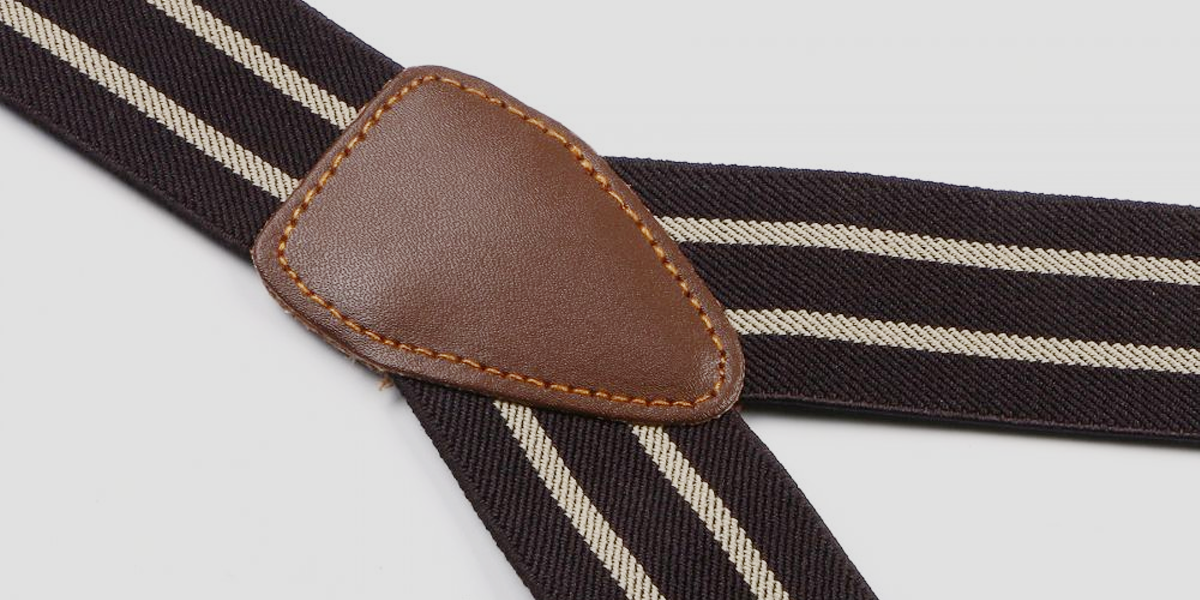
This is the most elegant and formal model, perfect especially for those with a lean and long body and suitable for tailored suits.
This is the best model for formal or semi formal occasions; offers less support for trousers – a support that is not necessary for situations in which more rigorous clothing is required.
X-back suspenders

The X-threaded suspenders are those in which the support straps cross behind each other but continue in a disjointed manner, going to tie separately in two different positions on the rear waistline.
Usually the X-back suspenders are more suitable for casual and less formal occasions and are often found in work clothes.
The presence of four coupling points provides greater support and stability: for this reason they are more suitable for the most lively situations. X-back suspenders are more common in the clip version.
Materials for suspenders
The suspenders can be made of various materials: the two principal types are leather or stretch material, but there are also models in silk, canvas, satin, felt, polyester, or knit.
In many cases you will be able to find braces made with a combination of various materials, for example elastic material with fabric or leather inserts, so as to exploit the advantages of each of these different materials.
The golden rule for choosing the material follows rigidity: the more rigid braces are more suitable for formal dresses; on the contrary, the more elastic braces are indicated for casual occasions.
Length and width of the suspenders
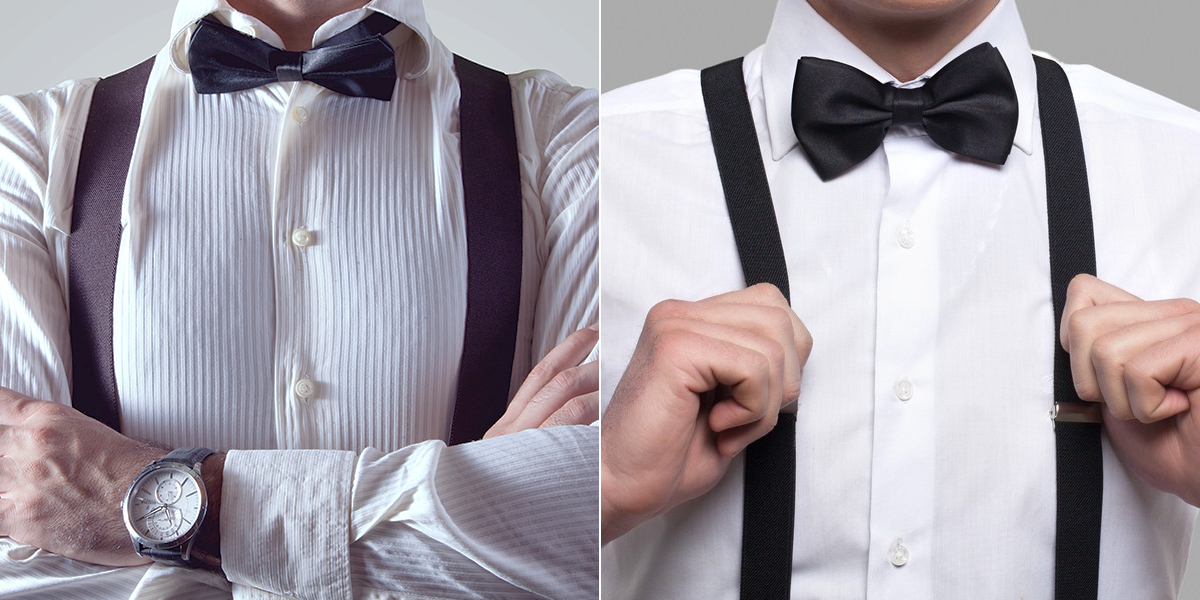
Width
The width of the braces is usually between 1 – 2 inches per strap. According to the bon ton of classic elegance, the suspenders should always be hidden, under the vest or under the jacket; so, from this point of view, the width may have importance!
In recent years, however, the trend that considers suspenders as an accessory you should show off has increased: in this case better, choose a width proportional to your body.
A pair of 2 inches braces may be too wide for the minute, while they may be more appropriate for those with a more important physical structure.
Length
In terms of length, it is necessary to distinguish between elastic materials and suspenders made entirely of leather (or more rigid materials).
For elastic braces, generally a length of 47 inches is sufficiently adaptable to dress most sizes and heights.
Considering the flexibility of the material, the elastic braces are the simplest and safest choice, due to their ability to extend in case it is necessary.
The situation is different for leather suspenders, which have less elasticity if not completely absent. In this case it will be necessary to carry out a more precise measurement, perhaps using a tape measure.
Just measure the distance obtained by placing the meter on the front waist of the trousers you would like to wear, passing the tape measure on your shoulders and positioning it on the rear waist, as if it were a single shoulder strap.
The most used colors for suspenders and how to combine them
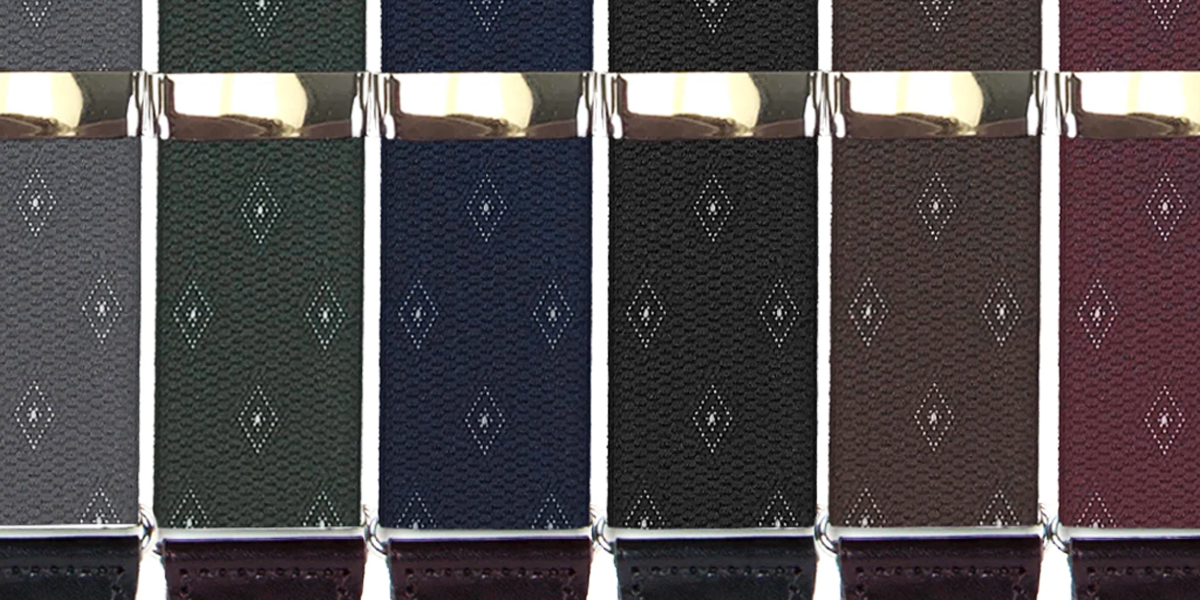
As one might expect, the most commonly used colors for suspenders are the classic solid colors, protagonists of classic elegance. A pair of dark blue braces represent the perfect passe partout for most styles and occasions – perhaps combined with a light blue shirt or choosing a tone on tone appropriate to the color.
The black suspenders are perfect to combine with a white shirt due to the chromatic contrast between the two elements; they look great when worn in a light gray or dark gray suit or on the (few) occasions when a black dress is suitable.
Our advice is to go for classic elegance and to risk exclusively if you’re participating in more sporting or casual business contexts.
A word of advice: in any case, chromatic excesses or particularly bright contrasts should be avoided.
Tie and suspenders
One of the most widespread doubts concerns the combination of suspenders and tie. As already mentioned, if you plan to wear suspenders hiding them under your vest or jacket, the choice of tie will follow the basic rules of elegance.
In this regard we advise you to consult our guide on how to combine shirt and tie.
If, on the other hand, braces are to be displayed (or you are not so sure that you can keep the promise of hiding them), you should opt for ties with coordinated shades to those of suspenders, reducing color or design contrasts to a minimum.
When to wear suspenders and why
Generally the use of suspenders, to be preferred to that of the belt, is indispensable for all the most formal and rigorous events – bearing in mind that on these occasions the braces must necessarily remain hidden under the vest or under the jacket.
Perfect accessory especially in the presence of tailored suits, the suspenders are suitable for weddings, religious or official ceremonies, for gala evenings and formal events in which it is required to wear the most rigorous suits, such as suits, tuxedos, tight or frac.
Needless to say, they should be worn with trousers without belt loops.
In situations where the suspenders are visible, the aforementioned rule of common sense applies: sober combinations are suitable for casual and semi-formal business contexts.
Are you ready to create your style? Lanieri’s online shop is waiting for you. If you prefer, you can book an appointment in our stores, where our Style Advisors will be at your disposal.

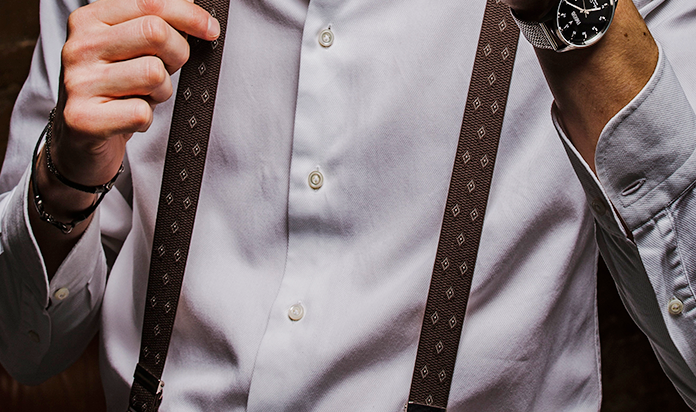
[…] you like braces? We do understand you, yet, they are ideal for colder months, because they prevent sweat from […]
[…] the choice of trousers, wearing trousers that include the application of braces, the belts, as practical, are not suitable for a look as formal as black […]
[…] them with belt loops, inserted into the cut and stitched with travetti, or, if you love to wear suspenders, with six internal buttons: frontally on both sides and on the […]
[…] pants that take braces, belts are no good when you’re going for a formal […]